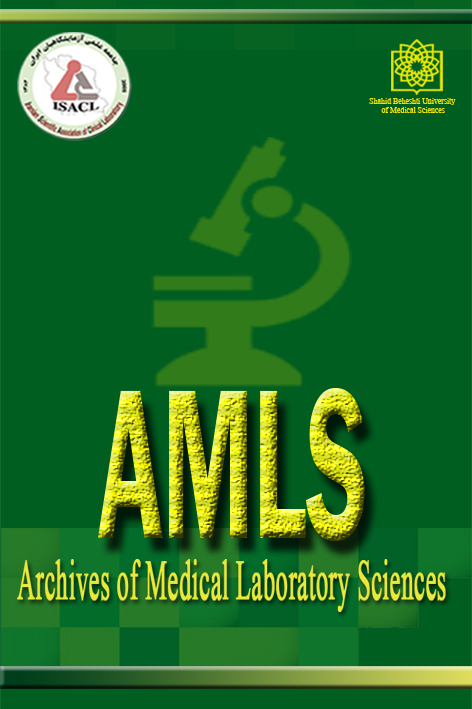The Mechanism of Resistance in AmpC-Producing Escherichia coli Isolated from Urinary Tract Infections
Archives of Medical Laboratory Sciences,
Vol. 6 (2020),
20 January 2020,
Page 1-9 (e6)
https://doi.org/10.22037/amls.v6.32573
Background and Aim: AmpC β-lactamases are capable of hydrolyzing all β-lactams except cefepime and carbapenems. The detection of AmpC-producing Escherichia coli has a high priority in infection management. This research is aimed to investigate the resistant AmpC- generating E. coli isolates and identify their genetic variety.
Methods: In this study, 230 E. coli isolates from patients having urinary tract infection symptoms were investigated in 2017-2018 to assess their susceptibility toward antimicrobial agents. AmpC genes were evaluated by PCR and molecular typing using the 10-loci MLVA method. MLVA images were examined by BioNumerics 6.6 software through the use of the UPGMA algorithms.
Results: The highest frequencies of susceptibility among E. coli isolates were to meropenem 96.08%, piperacillin-tazobactam 90.43%, followed by gentamicin 66.54%, ceftazidime 50%, ciprofloxacin 48.26%, ceftriaxone 41.74%. All E. coli isolates were resistant to amoxicillin-clavulanate. Thirty-eight AmpC-generating E. coli isolates were detected. The most abundant determinant was CIT and EBC, FOX, and DHA had the next ranks, respectively. Six major clusters and a singleton were identified by MLVA.
Conclusion: AmpC-generation ability is an effective feature in the resistance of E. coli isolates and its investigation is of crucial significance in infection management. The major mechanisms of AmpC beta-lactamase vary depending on time and geographical location.
*Corresponding Author: Mohammad Rahbar; Email: rahbar@health.gov.ir
Please cite this article as: Dolatyar Dehkharghani A, Haghighat S, Rahnamaye Farzami M, Rahbar M. The Mechanism of Resistance in AmpC-Producing Escherichia coli Isolated from Urinary Tract Infections. Arch Med Lab Sci. 2020;6:1-9 (e6). https://doi.org/10.22037/amls.v6.32573
